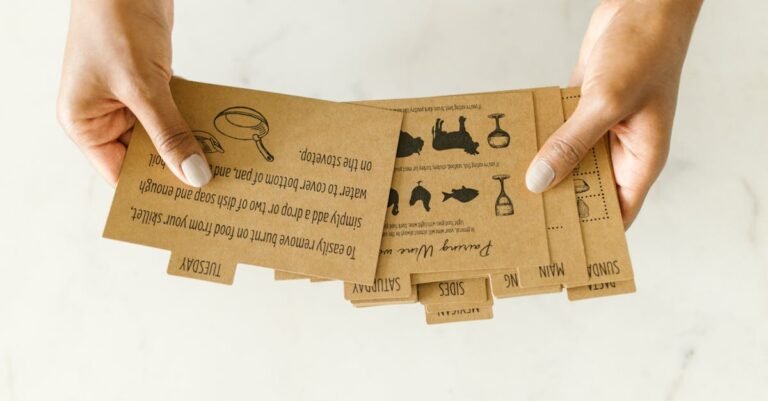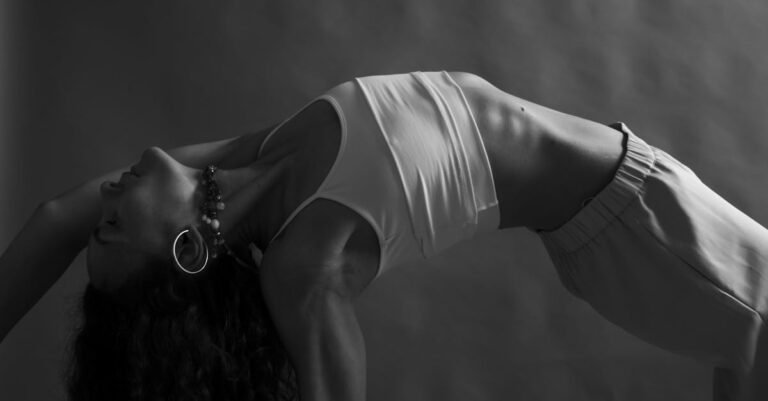Table Of Content
Kettlebell Basics: Simple Starter Moves to Kickstart Your Fitness Journey
Why Choose Kettlebells? Unpacking the Benefits
More Than Just a Weight: The Unique Advantage
Full Body Workout Powerhouse
Picking Your Partner: Selecting the Right Kettlebell
Weight Matters: Finding Your Starting Point
Material and Handle Considerations
Safety First! Essential Kettlebell Precautions
Your Workout Space: Clear and Present Danger (Avoidance!)
Listen to Your Body: The Golden Rule
Warming Up: Prepping Your Body for Action
The Core Four: Foundational Kettlebell Moves
1. The Kettlebell Deadlift: Building a Strong Foundation
Step-by-Step Deadlift Technique
Common Deadlift Mistakes to Avoid
2. The Goblet Squat: Mastering the Squat Pattern
How to Perform the Goblet Squat
Goblet Squat Pitfalls
3. The Two-Handed Kettlebell Swing: The King of Kettlebell Exercises?
Executing the Perfect Swing
Swing Errors That Zap Power
4. The Kettlebell Halo: Mobility and Shoulder Health
Circling the Halo: Technique Breakdown
Halo Hints and Tips
Bonus Move: The Around The Body Pass
Putting It All Together: A Simple Beginner Kettlebell Circuit
Cooling Down: Essential Post Workout Care
Conclusion: Your Kettlebell Journey Starts Now
Frequently Asked Questions (FAQs)
1. How often should I do these kettlebell exercises?
2. Can I lose weight just doing these kettlebell basics?
3. My back hurts when I do swings. What am I doing wrong?
4. What’s the difference between a kettlebell swing and a squat?
5. Can I use these moves if I’m completely new to exercise?
Kettlebell Basics: Simple Starter Moves to Kickstart Your Fitness Journey
Hey there! Ready to dip your toes into the awesome world of kettlebells? Maybe you’ve seen those cannonball looking weights with handles and wondered what the big deal is. Or perhaps you’re just looking for a super effective way to get stronger, fitter, and feel more powerful without spending hours in the gym. Well, you’ve come to the right place! Kettlebells might look a bit intimidating at first glance, but trust me, they are incredibly versatile tools, and getting started is simpler than you think.
Think of this guide as your friendly introduction, your starting block into kettlebell training. We’re going to break down the absolute essentials, focusing on simple starter moves that build a solid foundation. Forget those crazy complex routines you might see online for now. We’re all about mastering the basics safely and effectively. Ready to unlock a new level of fitness? Let’s grab that kettlebell (metaphorically, for now!) and get moving!
Why Choose Kettlebells? Unpacking the Benefits
So, why kettlebells? What makes them different from dumbbells or barbells? Aren’t weights just weights? Not quite! Kettlebells offer a unique blend of benefits that make them a fantastic choice, especially for beginners looking for efficient workouts.
More Than Just a Weight: The Unique Advantage
The magic of the kettlebell lies in its shape. That offset center of gravity – the handle being distinct from the main weight – forces your body to work harder to control it. It’s not like lifting a perfectly balanced dumbbell. This “instability” engages more stabilizer muscles throughout your body, particularly in your core, shoulders, and hips. It essentially turns even simple movements into a more dynamic challenge. It’s like trying to carry a wiggly toddler versus a perfectly still backpack – the toddler makes you work harder to stay balanced, right? Same idea!
Full Body Workout Powerhouse
Because kettlebell exercises often involve swinging, lifting, and controlling the weight through various planes of motion, they naturally recruit multiple muscle groups simultaneously. Think about the kettlebell swing (we’ll get to that!). It works your glutes, hamstrings, hips, core, back, and even shoulders – all in one explosive movement! This means you get a fantastic strength and cardio workout in less time. You’re building muscle, burning calories, and improving your cardiovascular health all at once. It’s efficiency at its finest!
Picking Your Partner: Selecting the Right Kettlebell
Alright, you’re sold on the benefits. Now, how do you choose your first kettlebell? Walking into a store or browsing online can be overwhelming with all the different sizes, shapes, and materials. Don’t sweat it; let’s break it down.
Finding Your Starting Point
This is crucial. Starting too heavy is a recipe for poor form and potential injury, while starting too light won’t challenge you enough to see results. Here’s a general guideline for beginners:
- Average Women:** Typically start with an 8 kg (18 lbs) or 12 kg (26 lbs) kettlebell.
- Average Men:** Often start with a 12 kg (26 lbs) or 16 kg (35 lbs) kettlebell.
Remember, these are just starting points! If you’re completely new to strength training, err on the lighter side. If you have some experience, you might go slightly heavier. The key is to choose a weight you can control safely through the basic movements, especially the deadlift and goblet squat, while still feeling challenged by the end of your reps. Ideally, try before you buy, or choose a weight that feels manageable but not ridiculously easy for the deadlift.
Material and Handle Considerations
Most kettlebells are cast iron, which is durable and classic. Some are coated in vinyl or neoprene, which can protect your floors but might feel different in hand. The most important factor, though, is the handle. Look for a handle that’s smooth (no sharp edges or seams that can tear up your hands) and wide enough for you to comfortably grip with both hands for exercises like the swing. Avoid handles that are overly thick or too narrow. A good quality cast iron kettlebell with a well finished handle is usually a solid investment.
Safety First! Essential Kettlebell Precautions
Before we even think about lifting that kettlebell, let’s talk safety. Kettlebells are fantastic tools, but like any form of exercise, proper technique and awareness are paramount to prevent injury.
Your Workout Space: Clear and Present Danger (Avoidance!)
This might sound obvious, but make sure you have ample space! Kettlebell movements, especially swings, require room in front, behind, and to the sides. Clear away pets, children, fragile objects, coffee tables – anything you could potentially hit or trip over. Imagine drawing a big circle around yourself; that’s roughly your safety zone. Also, ensure you have stable footing. A non slip surface is ideal. Avoid working out on plush carpets where you might lose balance.
Listen to Your Body: The Golden Rule
Pain is your body’s warning signal. Differentiate between muscle fatigue (that good burn) and sharp, shooting, or joint pain. If something hurts in a bad way, stop immediately. Don’t push through sharp pain. It’s always better to rest, reassess your form, or maybe even consult a professional (like a physical therapist or certified kettlebell instructor) than to risk serious injury. Start slowly, focus on form over weight or speed, and gradually increase the intensity as you get stronger and more comfortable.
Warming Up: Prepping Your Body for Action
Never jump straight into kettlebell exercises cold! A proper warm up increases blood flow to your muscles, improves mobility, and prepares your nervous system for the work ahead. Think of it like revving a car engine on a cold morning – you wouldn’t just floor it, right?
A good warm up should take about 5-10 minutes and include dynamic movements. Focus on mobilizing the joints you’ll be using:
- Joint Rotations: Neck circles, shoulder rolls (forward and backward), arm circles, wrist rotations, hip circles, torso twists, ankle rotations.
- Dynamic Stretches: Leg swings (forward/backward and side to side), cat cow stretch, bodyweight squats, walking lunges, inchworms.
- Light Cardio: A few minutes of jogging in place, jumping jacks, or high knees to get your heart rate up slightly.
The goal is to feel warmer, looser, and more connected to your body before you pick up the kettlebell.
The Core Four: Foundational Kettlebell Moves
Okay, warm up done? Space clear? Let’s get to the good stuff! We’re focusing on four fundamental moves that will build strength, coordination, and confidence with the kettlebell. Master these, and you’ll have a fantastic base for more advanced exercises down the road.
1. The Kettlebell Deadlift: Building a Strong Foundation
Forget everything you think you know about scary barbell deadlifts for a second. The kettlebell deadlift is the cornerstone of safe and effective kettlebell training. It teaches you the fundamental hip hinge pattern – learning to bend at your hips while keeping your back straight – which is crucial for almost every other kettlebell lift, especially the swing. This move primarily targets your glutes, hamstrings, and back muscles.
Step-by-Step Deadlift Technique
- Set Up: Place the kettlebell on the floor between your feet. Stand with your feet about shoulder width apart, toes pointing slightly outwards. Imagine the kettlebell handle is aligned with your ankle bones.
- The Hinge: Push your hips back as if you’re trying to tap a wall behind you with your butt. Keep your back straight (neutral spine – no rounding, no excessive arching!) and chest up. Allow your knees to bend slightly, but this is primarily a hip movement, not a squat. Your shins should remain relatively vertical.
- The Grip: Reach down and grip the kettlebell handle firmly with both hands, palms facing you. Keep your arms straight (think of them as hooks) and engage your lats (the muscles under your armpits) by pulling your shoulders down and back slightly.
- The Lift: Drive through your heels, squeezing your glutes, and stand up tall, bringing the kettlebell with you. Keep the kettlebell close to your body. At the top, stand straight, but don’t hyperextend your back.
- The Lower: Reverse the movement by pushing your hips back first, maintaining that straight back, and lower the kettlebell back to the starting position under control.
Common Deadlift Mistakes to Avoid
- Rounding the back: This is the biggest no no! Keep that spine neutral throughout. Think “proud chest”.
- Squatting instead of hinging: Remember to push those hips back first. Your knees bend, but it’s hip dominant.
- Letting the kettlebell drift forward: Keep it close to your body.
- Using your arms to lift: Your arms are just hooks; the power comes from your legs and hips.
2. The Goblet Squat: Mastering the Squat Pattern
The goblet squat is arguably one of the best ways to learn and perfect the squat movement pattern. Holding the kettlebell in front of your chest acts as a counterbalance, making it easier to stay upright and sink deeper into the squat while keeping good form. It heavily recruits your quads, glutes, and core.
How to Perform the Goblet Squat
- The Hold: Pick up the kettlebell safely (using your deadlift technique!). Hold it by the “horns” (the vertical parts of the handle) close to your chest, with the bottom of the bell pointing down. Keep your elbows tucked in.
- Stance: Stand with your feet slightly wider than shoulder width apart, toes pointed out slightly (find a comfortable position for your hips).
- The Descent: Initiate the squat by sending your hips back and down, as if sitting in a chair far behind you. Keep your chest up and your core engaged. Track your knees over your toes (don’t let them cave inward).
- Depth: Squat as low as you can while maintaining a straight back and keeping your heels on the ground. Aim for thighs parallel to the ground or slightly below, if your mobility allows. Imagine spreading the floor apart with your feet.
- The Ascent: Drive through your heels, squeeze your glutes, and stand back up to the starting position.
Goblet Squat Pitfalls
- Leaning too far forward: Keep that chest proud! The kettlebell helps, but focus on staying upright.
- Knees caving inward: Actively push your knees out slightly so they track over your feet.
- Lifting your heels: Keep your weight distributed through your whole foot, especially the heels. If your heels lift, your stance might be too narrow, or you might have tight ankles.
- Not going deep enough: Work towards achieving good depth for maximum benefit, but prioritize form over depth initially.
3. The Two-Handed Kettlebell Swing: The King of Kettlebell Exercises?
Ah, the kettlebell swing! This is the move most people associate with kettlebells, and for good reason. It’s a dynamic, powerful, hip hinge movement (see why mastering the deadlift first is important?) that builds explosive power, cardiovascular endurance, and strengthens the entire posterior chain (glutes, hamstrings, back). Important: The swing is NOT a squat and it’s NOT driven by your arms.
Executing the Perfect Swing
- Set Up: Place the kettlebell about a foot in front of you. Stand with feet shoulder width apart. Hinge at your hips (like the deadlift), keeping your back straight, and reach forward to grip the kettlebell handle with both hands.
- The Hike Pass: Tilt the kettlebell back towards you slightly. “Hike” the kettlebell back between your legs, aiming high towards your groin. Keep your arms straight and connected to your torso.
- The Hip Snap: As the kettlebell reaches its backswing position, explosively drive your hips forward. Imagine snapping a towel. Squeeze your glutes and abs hard at the top. This hip thrust is what propels the kettlebell forward and up.
- The Float: Let the kettlebell float up to about chest height. Your arms are just guiding it; they aren’t lifting it. Keep your shoulders packed (down and back).
- The Downswing: Let gravity bring the kettlebell back down. As it approaches your body, hinge at the hips again, letting it swing back between your legs smoothly, ready for the next rep. Maintain control; don’t just let it flop.
Swing Errors That Zap Power
- Squatting the swing: This is a hip hinge, not a squat. Hips go back and forth, not up and down primarily.
- Using arms to lift: The power comes from the hips! Arms stay relatively relaxed guides.
- Rounding the back: Keep that spine neutral, especially during the backswing.
- Hyperextending the back at the top: Stand tall and squeeze glutes/abs, but don’t lean back excessively.
- Letting the bell pull you forward: Stay rooted and control the bell’s descent.
Practice the swing patiently! It might feel awkward at first. Focus on the hip snap.
4. The Kettlebell Halo: Mobility and Shoulder Health
The Kettlebell Halo is less about brute strength and more about shoulder mobility, stability, and core engagement. It’s a fantastic exercise for warming up the shoulders or as part of your main workout. Think of it as drawing a halo around your head with the kettlebell.
Circling the Halo: Technique Breakdown
- The Hold: Hold the kettlebell upside down (bottoms up) by the horns, close to your chest. Stand tall with feet shoulder width apart, core engaged, glutes slightly squeezed.
- The Circle: Slowly circle the kettlebell around your head. Bring it across one shoulder, behind your head, past the other shoulder, and back to the starting position in front of your chest.
- Keep it Close: Try to keep the kettlebell as close to your head and neck as possible without actually hitting yourself! The closer it is, the more challenging it is for your core and shoulders.
- Smooth Movement: Aim for a smooth, controlled motion. Avoid jerky movements.
- Alternate Directions: Complete your desired reps in one direction, then switch and circle the kettlebell the other way.
Halo Hints and Tips
- Keep your head still: Don’t move your head to accommodate the bell; move the bell around your head.
- Engage your core: Keep your ribcage down and abs tight to prevent your torso from twisting or arching excessively.
- Control the weight: Don’t let the kettlebell’s momentum take over.
- Start light: This move requires more control than strength, so begin with a lighter weight than you might use for swings or squats.
Bonus Move: The Around The Body Pass
Here’s one more simple move to add to your toolkit: the Around the Body Pass. It’s great for grip strength, core stability, and coordination. It feels a bit like juggling, but much safer!
Stand tall, feet shoulder width apart, holding the kettlebell handle with one hand in front of you. Pass the kettlebell around your body, switching hands behind your back, and bringing it back to the front to switch hands again. Keep your core tight and try not to sway your hips too much. The movement should come primarily from your arms and shoulders, while your core stabilizes your torso. Go for a set number of repetitions or time in one direction, then switch directions.
Putting It All Together: A Simple Beginner Kettlebell Circuit
Now that you know the moves, how do you structure a workout? A simple circuit is a great way to start. You’ll perform one set of each exercise back to back with minimal rest, then rest for a longer period before repeating the circuit.
Here’s a sample beginner circuit:
- Kettlebell Deadlifts: 8-10 repetitions
- Kettlebell Halos: 5 repetitions each direction
- Goblet Squats: 8-10 repetitions
- Two Handed Swings: 10-15 repetitions
- Around The Body Pass: 8 repetitions each direction
Instructions: Perform each exercise in order. Rest for 15-30 seconds between exercises if needed, but try to keep it minimal. After completing all 5 exercises (one round), rest for 60-90 seconds. Repeat the entire circuit 2-4 times, depending on your fitness level and time available.
Listen to your body! Adjust reps, rest periods, and the number of rounds based on how you feel. Focus on quality form over quantity, especially when starting out.
Cooling Down: Essential Post Workout Care
Just as important as warming up is cooling down. Don’t just drop the kettlebell and walk away! A cool down helps your heart rate return to normal gradually and can improve flexibility.
Spend 5-10 minutes doing some static stretching. Hold each stretch for 20-30 seconds. Focus on the muscles you worked:
- Hamstring Stretch: Sit on the floor with legs extended, reach towards your toes.
- Glute Stretch: Pigeon pose or figure four stretch.
- Quad Stretch: Standing or lying quad stretch.
- Chest Stretch: Doorway stretch.
- Triceps Stretch: Reach one arm overhead, bend elbow, gently pull elbow with other hand.
- Child’s Pose: Great for relaxing the back.
Hydrate well after your workout and consider some foam rolling if you have one!
Conclusion: Your Kettlebell Journey Starts Now
And there you have it! Your introduction to the world of kettlebell basics. We’ve covered why kettlebells are awesome, how to pick the right one, essential safety tips, and most importantly, how to perform those foundational starter moves: the Deadlift, Goblet Squat, Two Handed Swing, and Halo (plus the bonus Around the Body Pass!). Remember, consistency and good form are your best friends on this journey. Don’t rush the process. Master these basics, build your strength and confidence, and you’ll be amazed at what you can achieve. That little cannonball with a handle is more than just iron; it’s a key to unlocking a stronger, fitter, more resilient you. So, go ahead, embrace the basics, practice diligently, and enjoy the rewarding journey of kettlebell training!
Frequently Asked Questions (FAQs)
1. How often should I do these kettlebell exercises?
As a beginner, aim for 2-3 times per week on non consecutive days. This gives your body adequate time to recover and adapt between sessions. Listen to your body – if you’re feeling particularly sore, take an extra rest day. Consistency is key, but recovery is just as important.
2. Can I lose weight just doing these kettlebell basics?
Yes, kettlebell training can definitely contribute to weight loss! These exercises build muscle (which boosts your metabolism) and burn calories. The swing, in particular, is great for cardiovascular conditioning. However, remember that weight loss is primarily driven by a combination of regular exercise and a healthy, calorie controlled diet. Kettlebells are a powerful tool in your arsenal, but nutrition plays a huge role too.
3. My back hurts when I do swings. What am I doing wrong?
Back pain during swings usually indicates improper form. The most common culprits are: 1) Rounding your back instead of keeping it neutral, especially during the hinge/backswing. 2) Squatting the movement instead of hinging at the hips. 3) Hyperextending your back at the top of the swing. Stop immediately if you feel pain. Go back to practicing the deadlift to reinforce the hip hinge pattern. Consider filming yourself or having a qualified instructor check your form. Don’t push through back pain.
4. What’s the difference between a kettlebell swing and a squat?
This is a crucial distinction! A squat is a knee dominant movement where your hips and knees bend significantly, lowering your body vertically (like sitting in a chair). A kettlebell swing is a hip dominant movement. Your hips move primarily backward and then snap forward powerfully, while your knees bend only slightly. Think “hips back and forth” for the swing, and “hips down and up” for the squat.
5. Can I use these moves if I’m completely new to exercise?
Absolutely! These moves, particularly the deadlift and goblet squat, are excellent starting points for anyone new to exercise, provided you start with an appropriate weight and focus intently on learning the correct form. They build fundamental movement patterns and strength. Start slowly, prioritize technique over lifting heavy, and consider seeking guidance from a trainer if you’re unsure about your form.










